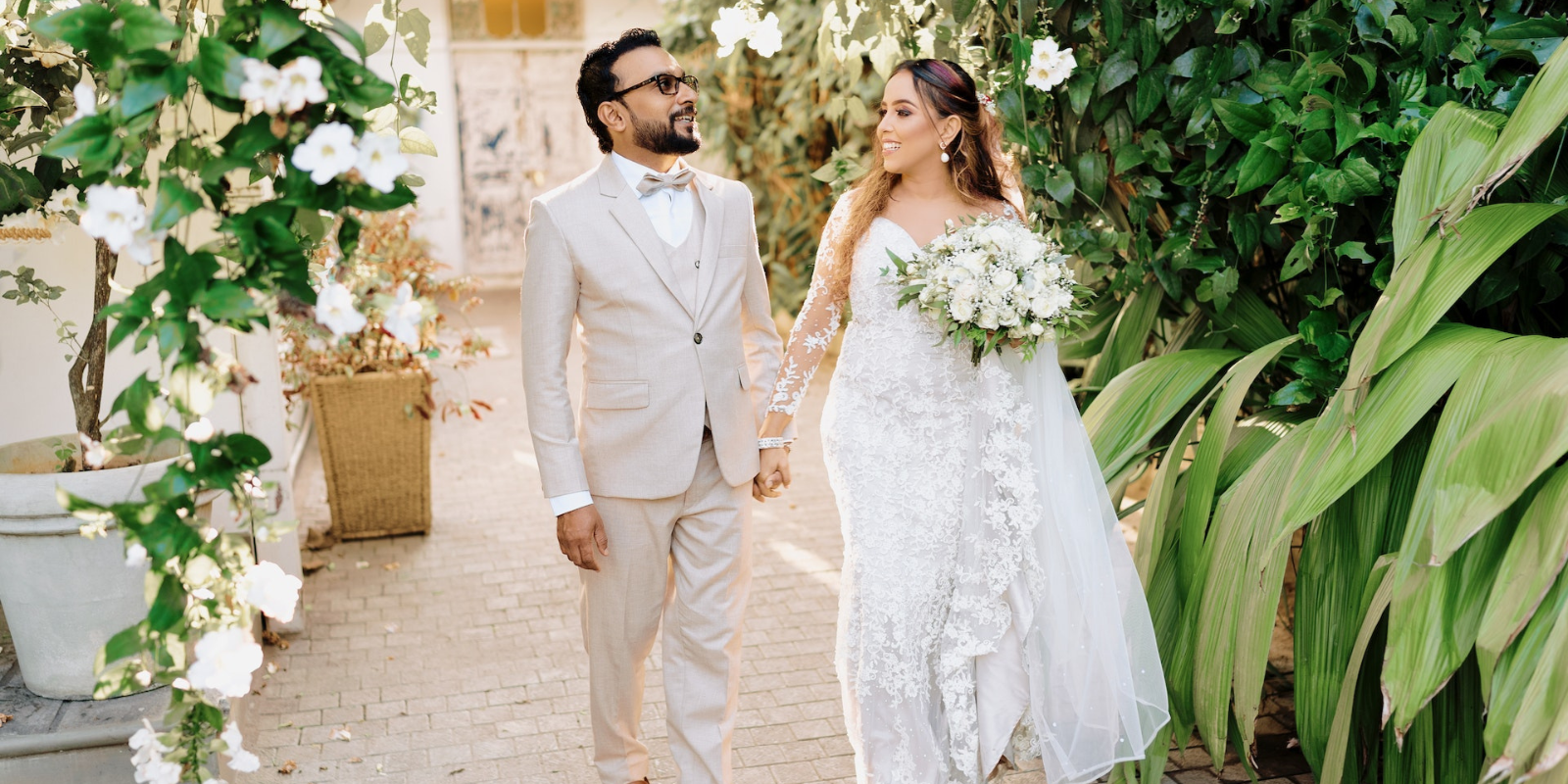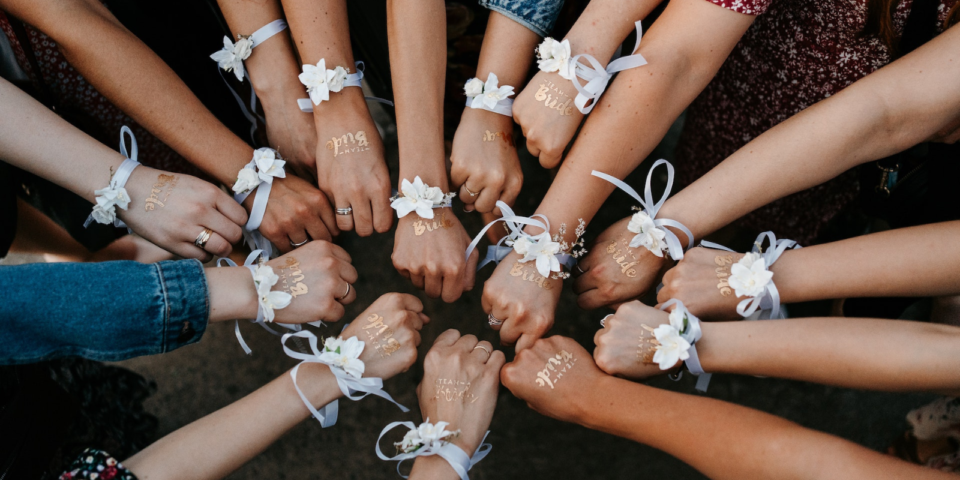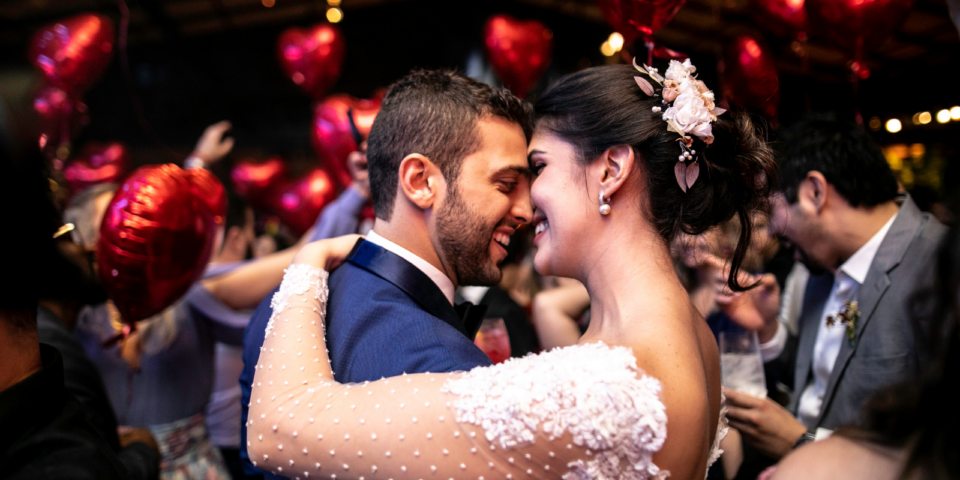Hosting a bilingual wedding is a unique opportunity to fuse two cultures together and create a beautifully blended celebration. But, planning a multicultural wedding can also seem a little daunting – especially if you have language barriers to consider.
Creating a bilingual wedding website will ensure all of your loved ones feel included, regardless of their native language. So, what exactly should you include on a bilingual or multilingual wedding website to make it as helpful as possible?
From essential event details to cultural traditions, read on as we share our guide to creating a bilingual wedding website below!

What is a Bilingual/Multilingual Wedding Website?
A wedding website is a central online hub where your guests can find all of the information they need to prepare for your event. Think: timings, venue directions and transport details.
The purpose of a wedding website is to streamline communication between you and your loved ones by providing a helpful resource that answers all of their event queries. A wedding website can also be used to manage your guest list, by collecting and tracking RSVPs for your celebration.
So, what’s the difference between a traditional wedding website and a bilingual/multilingual wedding website? Well, a bilingual or multilingual wedding website is specifically designed for couples who come from different cultural backgrounds. If you’re planning a multicultural wedding, you’ll likely need to communicate these details in two (or more) languages to accommodate the needs of your guests.
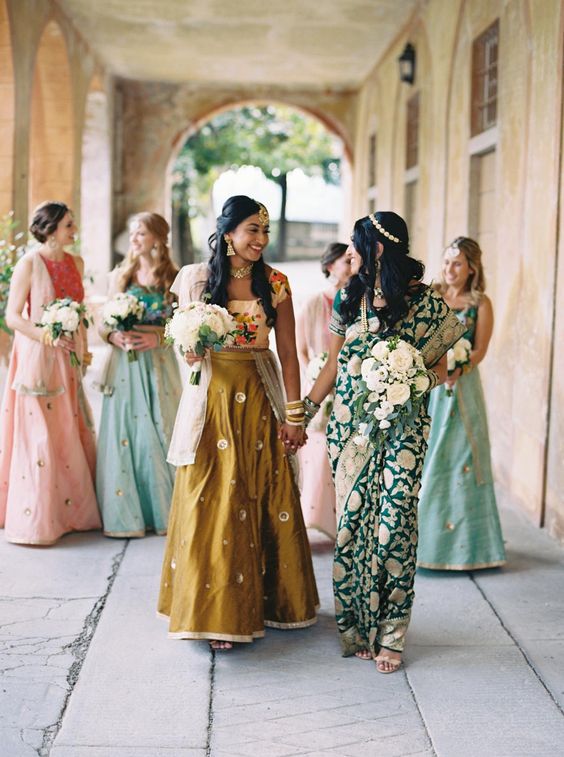
Do You Need to Create a Bilingual/Multilingual Wedding Website?
If you’re planning a bilingual wedding, including both languages on your wedding website is definitely a thoughtful idea.
While some of your guests may be fluent in both languages, there may be others who only speak in their native tongue. Accommodating both languages on your wedding website will ensure your loved ones can access the details they need without any confusion.
Don’t forget that international guests may be traveling long distances to attend your event, and will be relying on your wedding website to help them plan their trip. With this in mind, it’s important to provide them with information they can easily understand in their native language.
Remember – if your guests can’t find the information they need, you’ll be their first point of call! Creating a bilingual wedding website helps to streamline communication, while also saving you time and stress in the process. Read 8 reasons why you need a wedding website here!

How to Create a Bilingual or Multilingual Wedding Website
So, what’s the best way to create a bilingual or multilingual wedding website that accommodates the needs of your entire guest list?
Well, there are a few different options to consider. You can:
- Include both languages on your wedding website using paragraphs of translated text. However, this can take up lots of space on your wedding website and impact the overall design and user experience.
- Design your wedding website in one language, and ask your international guests to use Google Translate if needed. Just keep in mind that Google Translate isn’t 100% accurate, so this may result in some awkward or confusing translations!
- Use a bilingual wedding website builder. Here at WedSites, we’ve designed a wedding website builder that can translate your text into multiple languages and offer personalized views for each guest. This allows your guests to access your wedding website and RSVP form in their native language, creating a seamless user experience.
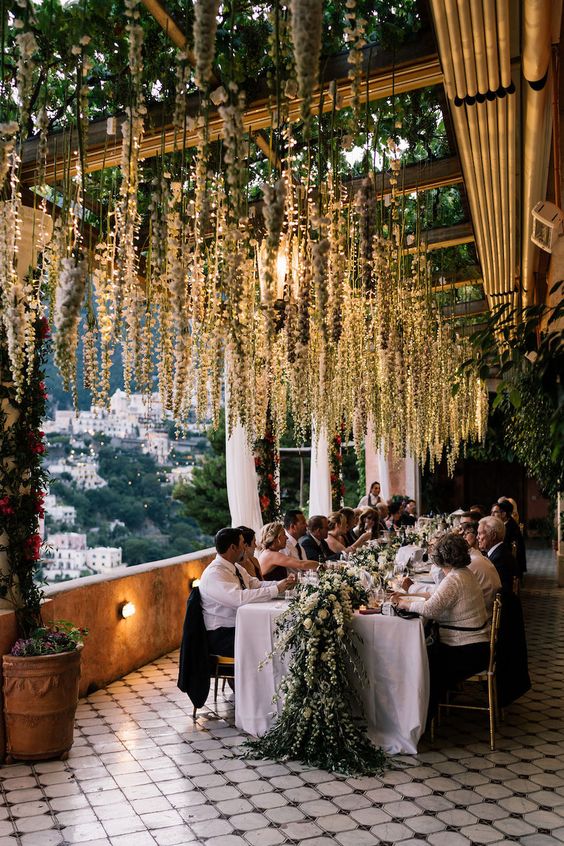
What to Include on a Bilingual/Multilingual Wedding Website
Now, let’s talk about exactly what you need to include on a bilingual or multilingual wedding website. This will be similar to a traditional wedding website, but with some special considerations to ensure guests from all cultures feel welcome.
First, the basics. Just like a traditional wedding website, your bilingual wedding website should cover all of the essential information about your event. This includes:
- Who’s getting married (that’s you!)
- The wedding date and time
- The wedding venue
- The RSVP date and method
Next, you should include some practical information to help your loved ones plan and prepare for your celebration. This includes things like:
- Hotel block information
- Accommodation suggestions
- Event FAQs
- Dress code details
- Transport and parking arrangements
- Schedule of events
- Gift registry details
Along with the practical stuff, you may want to personalize your wedding website with some fun details too! For example:
- An about us page or “love story”
- Bridal party introductions
- An online guestbook
- Your wedding hashtag
- Photo or video galleries
Your wedding website can also be used to address any tricky questions, such as whether kids or plus-ones are invited. Read our wedding website wording examples for tricky scenarios here.
When it comes to planning a bilingual or multilingual wedding, you should also use your wedding website to let guests know what to expect on the day. If you have guests traveling from other countries, it’s a good idea to include some additional travel tips to help them build their itinerary.
For a bilingual or multilingual wedding website, we’d suggest including:
- Any cultural traditions you’d like your guests to follow (for example, dressing in traditional attire)
- Important cultural practices or customs your guests should be aware of (to help them avoid any etiquette faux pas)
- Details about any pre or post-wedding events
- Packing suggestions
- Contact information
- Local transport options
- A cheat sheet of common phrases in both languages
You may want to create a detailed FAQs page on your wedding website that answers all of these questions in one place. While it may seem like a lot of information, your international guests will definitely appreciate it!
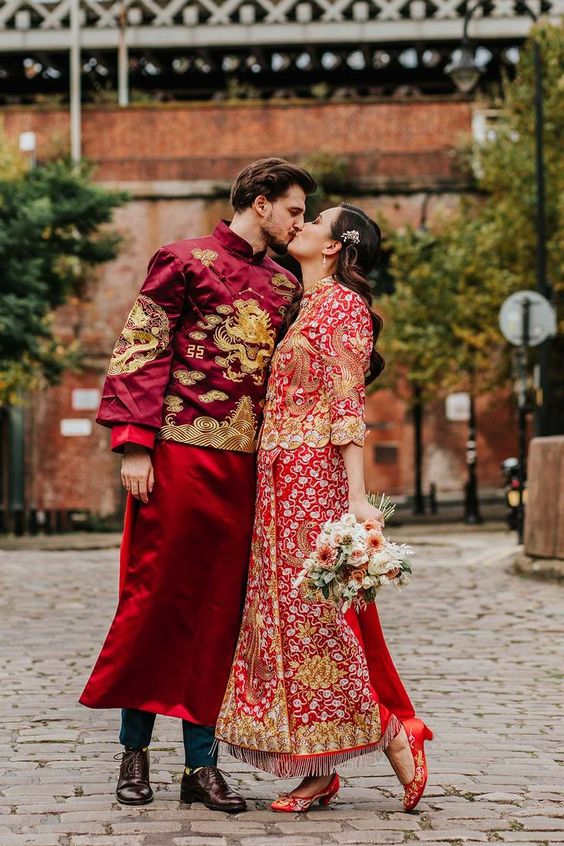
How to Create a Bilingual Wedding Website with WedSites
Our bilingual wedding website builder is the easiest way to include multiple languages on your wedding website, without compromising the user experience or confusing your guests.
When you’re ready to get started, simply use our drag-and-drop website builder to create your personalized wedding website. You can choose from a range of modern templates and customize everything from colors and fonts to images and digital artwork. Read our guide on building a beautiful, practical wedding website in 6 simple steps here!
Once this is complete, you can duplicate your wedding website and translate it into another language. If you’re planning a multilingual wedding, you can repeat this process for as many languages as you need.
Then, when you’re ready to send out the link to your loved ones, simply assign a preferred language to each guest. This allows your guests to view and experience your wedding website in their native language, without sifting through clunky paragraphs of translated text.
If you’re going digital with your wedding invitations and RSVP cards, you can also translate these into different languages, too – ensuring all of your guests have a cohesive experience from start to finish. Learn more about our bilingual wedding website builder here!
Inspiration for Planning a Bilingual Wedding
If you’re planning a bilingual or multilingual wedding, it’s safe to say your guests will be an international bunch! Along with creating a seamless bilingual wedding website, there are so many great ways to celebrate both cultures on your wedding day and ensure everyone feels comfortable.
For example:
- Incorporate both languages into your wedding day signage, including your ceremony programs, welcome sign, seating chart and directional signage.
- Create a personalized ceremony that includes both languages.
- Draw inspiration from both cultures when it comes to your decor, menu choices and song selections.
- Sit down with your family members from both sides, and ask if they have any meaningful cultural traditions they’d like to incorporate.
While planning a bilingual wedding can seem like a logistical nightmare, it definitely doesn’t have to be! By creating a bilingual wedding website, your guests can access the information they need while also feeling included.
You can sign up for your free WedSites account to get started, or read our guide on how to plan a thoughtful and practical bilingual wedding here.
